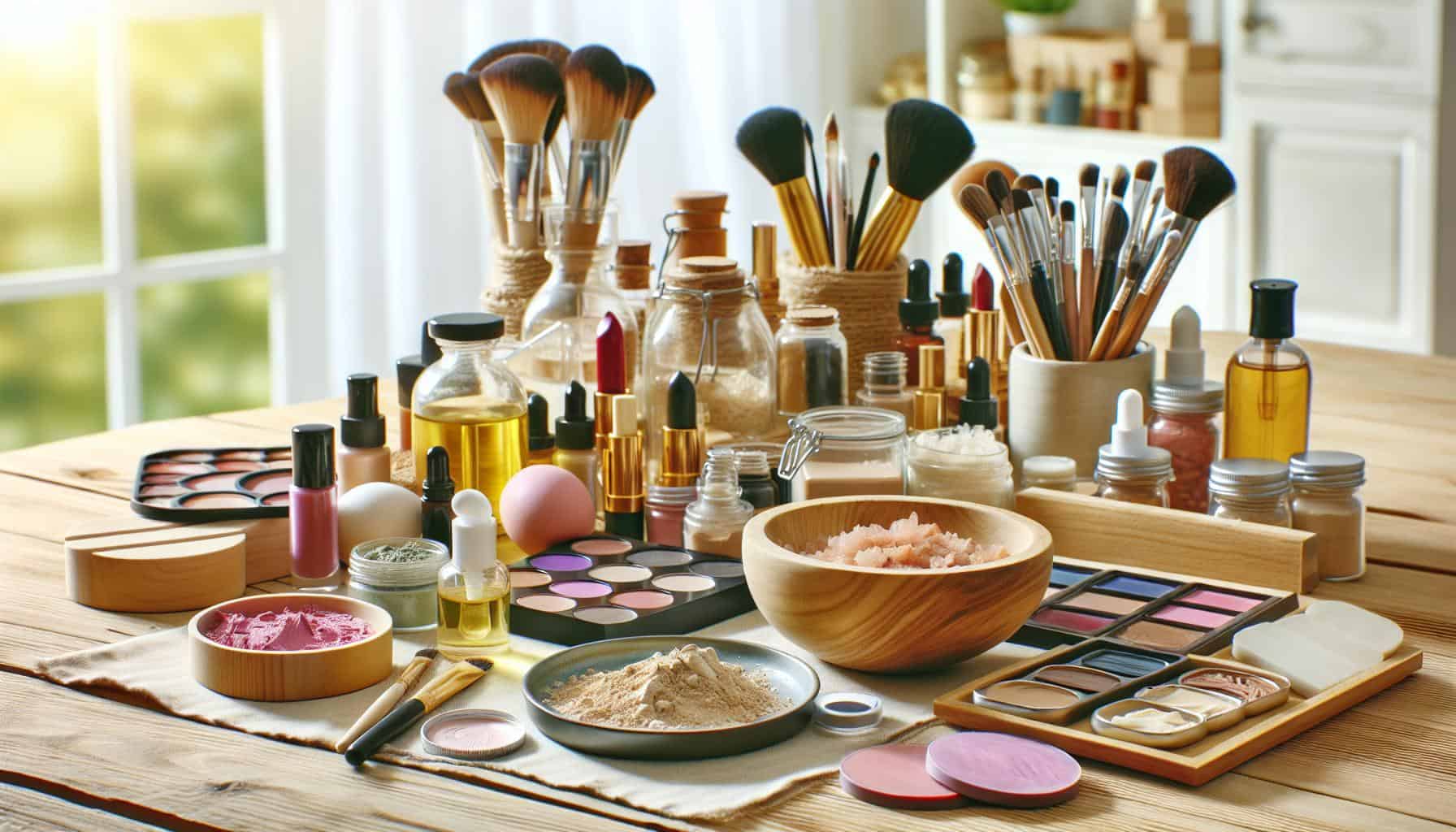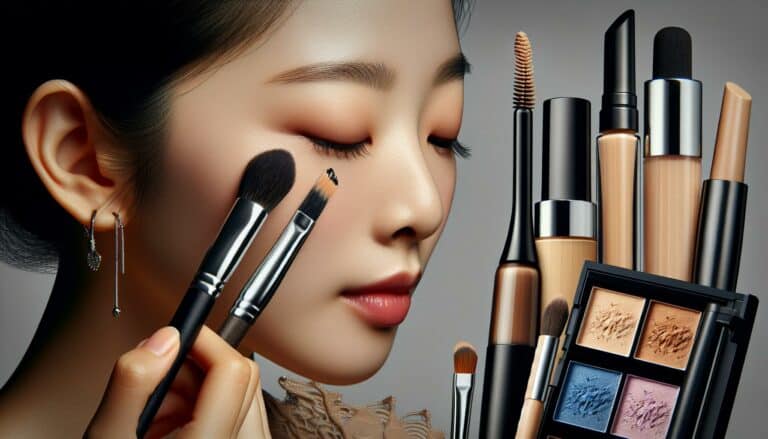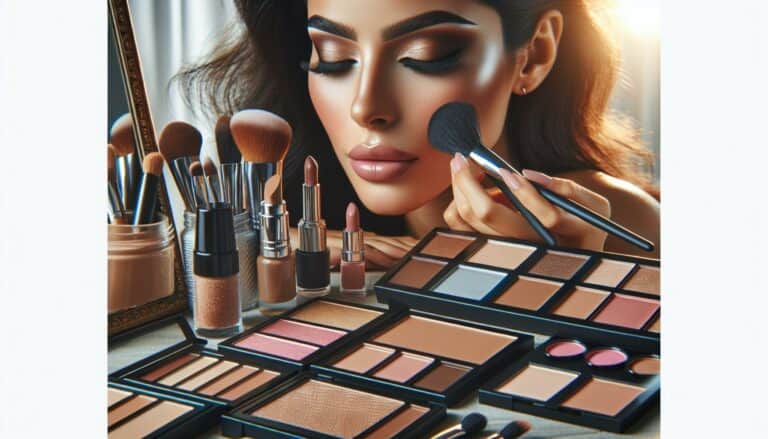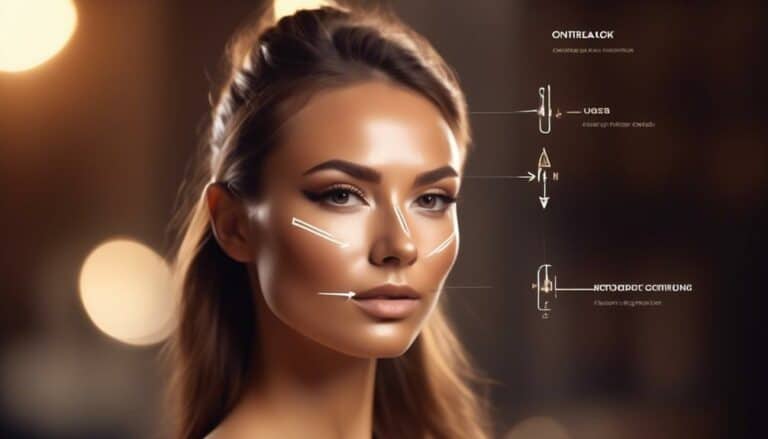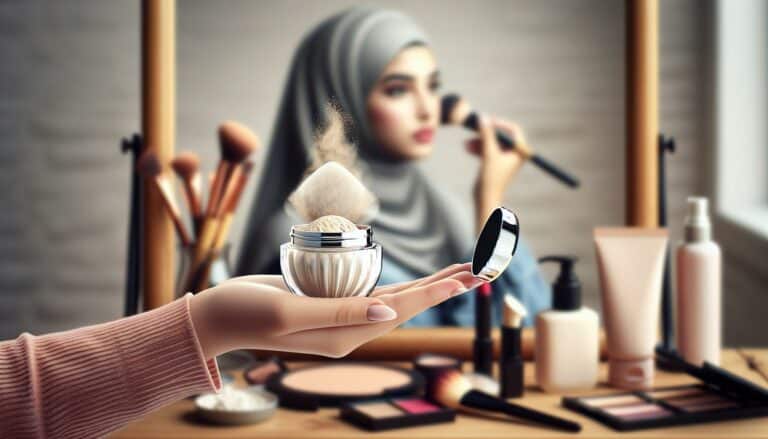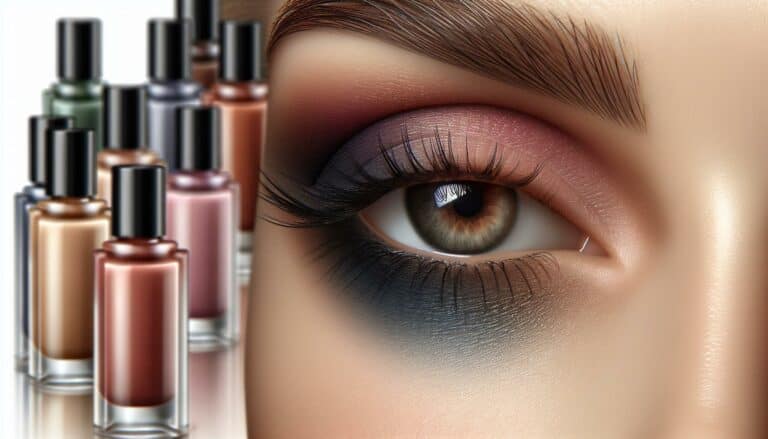DIY Makeup Guide: Create Custom, Eco-Friendly Cosmetics at Home
Why Make Your Own Makeup?
Diving into the world of homemade cosmetics offers a plethora of advantages that go beyond simple beauty. It’s about embracing autonomy over your skincare and makeup routines.
One of the primary benefits is absolute transparency. In today’s market, commercial products often contain an array of unpronounceable substances. When you make your own makeup, you precisely know what’s going onto your skin. This level of control is pivotal, especially for those with sensitive skin or allergies.
“Creating your own makeup means you’re in charge of every ingredient.”
Customization is another key advantage. Whether you’re aiming for a specific shade or a formula that caters to your skin type, homemade cosmetics allow for a level of personalization that off-the-shelf products can’t match.
Additionally, making your own makeup can be cost-effective. The upfront costs of raw materials might seem high, but in the long run, you’ll save money. The table below showcases a basic cost comparison:
| Item | Homemade Cost | Store-Bought Cost |
|---|---|---|
| Lipstick | $5 | $20 |
| Foundation | $10 | $35 |
| Eyeshadow Palette | $15 | $50 |
Embracing DIY makeup isn’t just about aesthetics; it’s a step toward sustainable living. By reducing waste from packaging and unwanted chemicals, you’re making an environmentally conscious choice.
In the realm of DIY cosmetics, you’re not just a consumer but a creator. The blend of science, creativity, and self-care makes the process not only a practical choice but a deeply satisfying one.
Benefits of Homemade Makeup
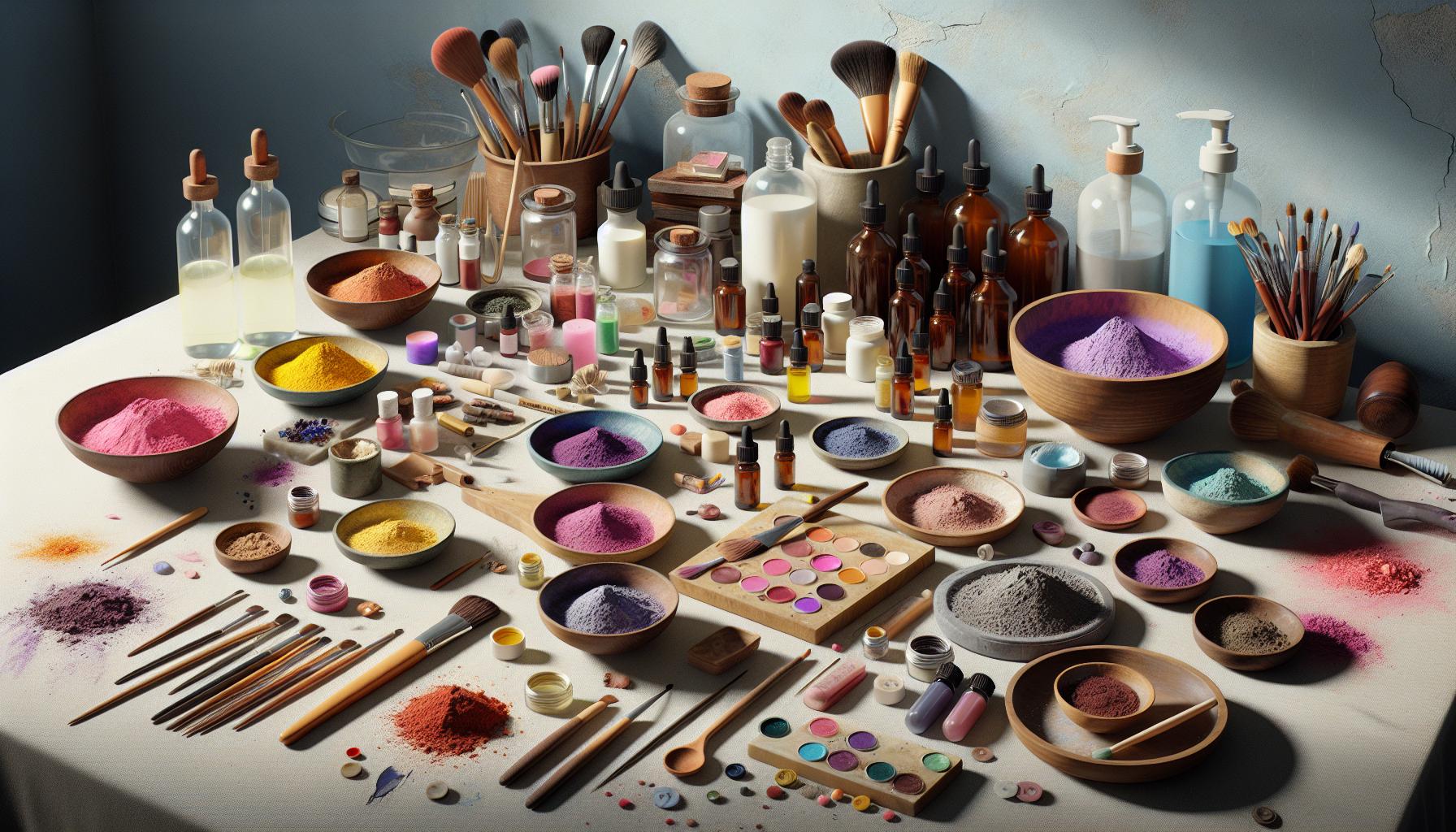
Embarking on the journey of creating your own makeup offers more than just the satisfaction of a DIY project. It’s about taking control and understanding what you’re applying to your skin daily.
Transparency in ingredients is one of the biggest perks. You’ll know exactly what’s going into your products, avoiding harmful chemicals that are often found in commercial makeup. This level of awareness is crucial for individuals with sensitive skin or allergies.
“Creating your own makeup means becoming an artist and a scientist for your skin’s health.”
Customization is another significant advantage. You’re no longer limited to the shades and formulas available in stores. Whether you need a specific shade of foundation or a moisturizing lipstick, homemade makeup allows you to create products perfectly suited to your Skin Type and Color Preference.
| Cost of Store-Bought Makeup | Cost of Homemade Makeup Ingredients |
|---|---|
| $30 – $50 for Foundation | $10 – $20 for Base Ingredients |
| $15 – $25 for Lipstick | $5 – $10 for Natural Pigments and Bases |
Not only do you get to save money, but you’re also contributing to a greener planet. By choosing eco-friendly packaging and reducing waste, you’re making a Sustainable Choice.
Before you dive into the world of homemade cosmetics, it’s essential to research and gather quality ingredients. And remember, the process itself is supposed to be fun! Experimenting with colors and textures can lead to unique products that are truly yours.
Essential Ingredients for DIY Makeup
Venturing into the world of DIY makeup means getting familiar with some key ingredients that’ll form the base of your creations. Whether you’re aiming for a flawless foundation or a custom lip color, knowing what each ingredient does and how it affects your skin is crucial. Let’s dive into some must-haves for your DIY makeup kit.
Base Ingredients
At the heart of most makeup formulas are base ingredients that determine the product’s texture and how it applies to your skin. These typically include:
- Oils: Jojoba, coconut, and argan oils are popular for their moisturizing properties.
- Waxes: Beeswax and candelilla wax help solidify products like lipstick and eyeshadow.
- Butters: Shea and cocoa butter offer a creamy consistency, ideal for lip balms and creamy blushes.
| Ingredient | Purpose | Common Use |
|---|---|---|
| Jojoba Oil | Moisturizing, base oil | Lipsticks, foundations |
| Beeswax | Solidifying agent | Lipsticks, eyeliners |
| Shea Butter | Creamy consistency | Lip balms, blushes |
Colorants
Natural colorants give your makeup its vibrant hues. For a broad palette, consider:
- Mineral Powders: Micas and iron oxides come in a rainbow of shades.
- Plant-Based Colors: Beetroot powder, spirulina, and cocoa powder offer natural alternatives.
In crafting your perfect shade, experiment with combinations of these colorants to achieve the desired hue.
Remember: “The beauty of DIY makeup is not just in the creation but in the ability to tailor every aspect to fit your needs perfectly.”
Safety and Preservation
While most natural ingredients are safe, preservatives are important to prolong your makeup’s shelf life and prevent bacterial growth. Natural options include vitamin E and grapefruit seed extract, which also offer skin benefits.
Through understanding and combining these essential ingredients, you’ll be well on your way to creating makeup that’s not only beautiful but tailored specifically to your preferences and skin needs.
DIY Foundation Recipes
Creating your own foundation at home allows you to customize the shade and coverage to perfectly match your skin tone. It’s easier than you might think, and with a few simple ingredients, you’ll be on your way to a healthier, tailor-made complexion.
Ingredients to Gather
Before diving into the recipes, let’s look at the essential ingredients you’ll need:
- Base powders such as zinc oxide for coverage and sun protection
- Colored micas or iron oxides for shade customization
- A binder like jojoba oil or shea butter to hold everything together
Simple Powder Foundation
For a start, let’s make a powder foundation. It’s perfect for those with oily skin or those who prefer a matte finish.
| Ingredient | Quantity |
|---|---|
| Zinc oxide | 2 teaspoons |
| Arrowroot powder | 1 teaspoon |
| Iron oxide (color of your choice) | 1/4 teaspoon or as needed |
- Mix the zinc oxide and arrowroot powder in a bowl.
- Gradually add the iron oxide until you reach your desired shade.
- Transfer to a clean container for storage.
Pro Tip: Start with a small amount of iron oxide and gradually increase to avoid making the foundation too dark for your skin tone.
Liquid Foundation
For those preferring a dewy finish, creating a liquid foundation is your best bet. Here’s a basic recipe:
| Ingredient | Quantity |
|---|---|
| Jojoba oil (or any carrier oil of your choice) | 2 tablespoons |
| Zinc oxide | 2 teaspoons |
| Iron oxide | 1/2 teaspoon or as needed |
| Shea butter | 1 teaspoon |
- Melt the shea butter and mix with the jojoba oil.
- Add the zinc oxide and mix thoroughly to avoid clumps.
- Gradually add iron oxide until you achieve the perfect match for your skin tone.
Both recipes can be adjusted in terms of coverage and shade by altering the amounts of zinc oxide and colorants. Experimenting is key to finding the perfect match for your skin.
DIY Lipstick Recipes
Diving into the world of DIY cosmetics, lipstick stands out as a fun and customizable makeup item you can easily create at home. The process is not only rewarding but also allows you to craft shades that are uniquely yours. Below are some simple recipes to start your journey into homemade lipsticks.
To begin, you’ll need a few basic ingredients and tools:
- Base ingredients: Shea butter, beeswax, and coconut oil serve as the perfect blend for smooth application.
- Colorants: Mica powders and natural dyes provide the pigment you desire.
- Tools: A double boiler, molds or empty lipstick tubes, and a stirring tool are essential.
“Creating your own lipstick lets you become the artist of your beauty routine, turning simple ingredients into your signature shade.”
Classic Red Lipstick Recipe
- Ingredients:
- 1 tsp beeswax pellets
- 1 tsp shea butter
- 1 tsp coconut oil
- 1/4 tsp mica powder (red)
- Instructions:
- Melt the beeswax, shea butter, and coconut oil using a double boiler.
- Mix in the mica powder until fully blended.
- Pour into molds or tubes and let it cool completely.
Customizable Nude Lipstick
For those who love a good nude lipstick, adjusting the color to perfectly match your skin tone is key. Start with the base recipe and experiment with different amounts of mica powder and natural pigments like cocoa powder or cinnamon until you find your match.
| Ingredient | Measurement |
|---|---|
| Beeswax Pellets | 1 tsp |
| Shea Butter | 1 tsp |
| Coconut Oil | 1 tsp |
| Mica Powder | To taste |
| Cocoa/Cinnamon | Optional |
By crafting your own lipsticks, you not only gain control over the ingredients and shades but also contribute to a more sustainable and personalized beauty regimen. Experiment with textures and colors to truly make each creation your own.
DIY Eyeshadow Recipes
When diving into the world of DIY makeup, creating your own eyeshadow can be particularly thrilling. There’s something incredibly satisfying about blending your own colors to match your mood or outfit perfectly. Below, you’ll find simple recipes to kickstart your journey towards custom, eco-friendly eyeshadow.
Basic Mica Eyeshadow
The foundation of most homemade eyeshadows is mica powder, a natural mineral that provides a shimmering base. To create a basic mica eyeshadow, you’ll need:
- Mica powder (color of your choice)
- Binder (such as jojoba oil)
- Start with 1 teaspoon of mica powder in a small mixing bowl.
- Add 2-3 drops of binder to help the powder adhere to your skin.
- Mix thoroughly until you achieve a consistency you’re happy with.
This formula offers a plethora of color options depending entirely on the mica powder you choose.
Matte Eyeshadow
For those preferring a matte finish, arrowroot powder serves as a great base:
- Arrowroot powder (1 teaspoon)
- Cocoa powder or activated charcoal (for color)
| Ingredient | Amount |
|---|---|
| Arrowroot Powder | 1 tsp |
| Colorant (Cocoa/Charcoal) | to color |
- Mix arrowroot powder with a tiny amount of your chosen colorant.
- Gradually add more colorant until you reach your desired shade.
"The beauty of DIY makeup lies in the freedom to create exactly what you imagine."
Bold, beautiful eyeshadows are at your fingertips, with the added benefit of knowing precisely what’s going onto your skin. Whether aiming for a subtle shimmer or a bold matte, these recipes are just the beginning of your custom eyeshadow crafting journey.
Tips for Making Your Own Makeup
Embarking on your DIY makeup journey can be as exciting as it is daunting. But worry not! Here are some invaluable tips to make your experience smoother and more enjoyable.
Firstly, Start Small. Don’t try to overhaul your entire makeup collection in one go. Pick one product you’re most excited about—be it lipstick, foundation, or eyeshadow—and start there. This approach helps you to refine your skills and understand what works best for you without becoming overwhelmed.
When it comes to sourcing Ingredients, focus on quality. High-quality, natural ingredients not only contribute to better skin health but also ensure the effectiveness and longevity of your makeup. For pigments, micas, and base materials like oils and waxes, opt for reputable suppliers. Here, a handy table summarizes the base ingredients you might need:
| Ingredient Type | Examples |
|---|---|
| Oils | Jojoba, Coconut, Almond |
| Waxes | Beeswax, Carnauba |
| Butters | Shea, Cocoa |
| Pigments | Mica Powders, Iron Oxides |
Remember, Less is More. Natural makeup relies on minimal ingredients, so always start with small batches to test for skin reactions and color accuracy. This approach not only saves resources but also helps in experimenting with different shades and formulations.
“The beauty of DIY makeup is its versatility. Feel empowered to adjust colors and ingredients. It’s all about what makes you feel best in your skin.”
Lastly, prioritize Hygiene and Preservation. Homemade makeup doesn’t contain the harsh preservatives found in commercial products, making cleanliness paramount. Always use sterilized equipment and consider adding natural preservatives like Vitamin E to extend shelf life without compromising safety.
By keeping these tips in mind, you’re well on your way to crafting makeup that’s uniquely yours while being gentle on your skin and the environment.
Conclusion
Delving into the art of making your own makeup isn’t just a hobby—it’s a journey towards self-sufficiency and personalization in your beauty regimen. As you’ve learned the basics and experimented with various recipes, you’ve seen firsthand how tailoring each product can enhance not only your appearance but also your skin’s health.
- Quality of Ingredients: Opt for organic and non-toxic components to ensure the safety and effectiveness of your homemade cosmetics.
- Customization: Embrace the freedom to create custom shades and textures. It’s all about what works best for you.
- Eco-Friendliness: By choosing sustainable and minimal packaging, you’re contributing to a greener planet.
“The beauty of DIY makeup lies in its simplicity and the joy of creating something uniquely yours. It’s not just makeup; it’s a statement of your commitment to wellness and sustainability.” – Anonymous
Cost Comparison between DIY Makeup and Store-Bought Products:
| Item | DIY Cost | Store-Bought Cost |
|---|---|---|
| Foundation | $5 | $30 |
| Lipstick | $2 | $25 |
| Eyeshadow | $1.50 | $20 |
By investing time in crafting your own makeup, you’re not just saving money; you’re also ensuring that you know exactly what’s touching your skin. Plus, it’s undeniable that wearing a product you’ve created brings a unique sense of satisfaction and confidence.
Remember, the journey doesn’t end here. There’s always more to learn, more to create, and more ways to enhance your natural beauty through the art of DIY makeup. Keep exploring, experimenting, and enjoying every moment of this creative process.

